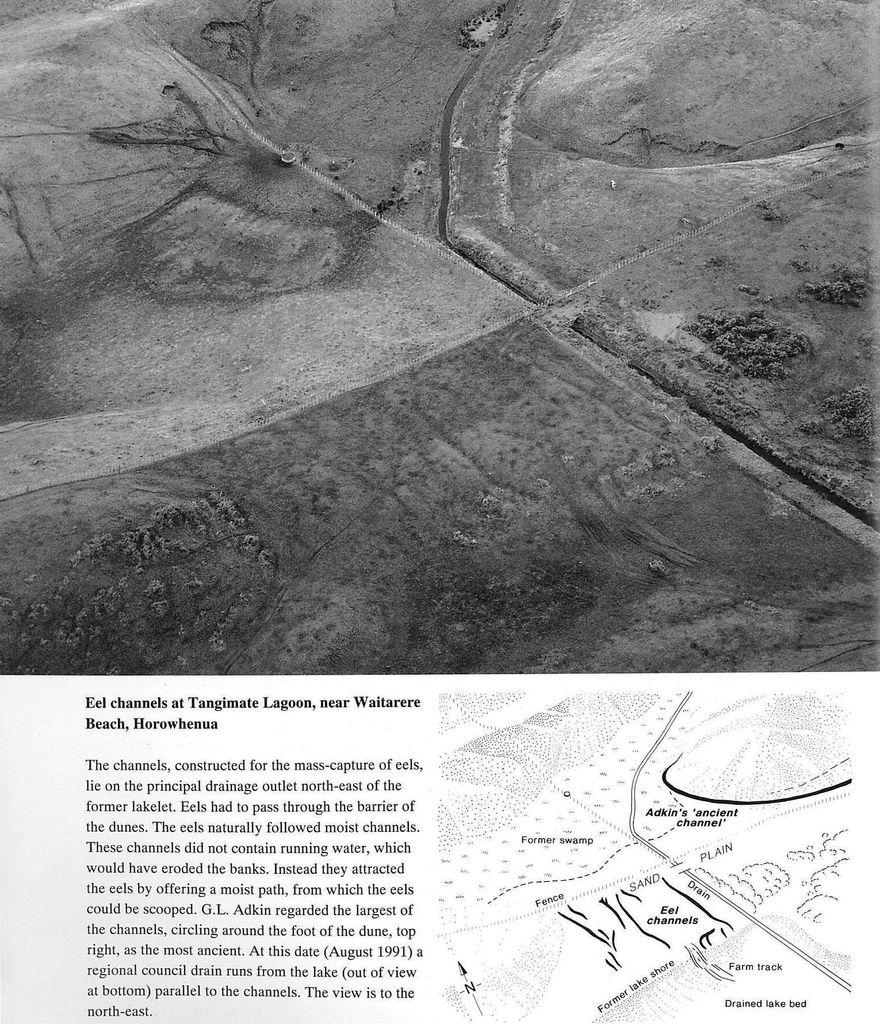The channels, constructed for the mass-capture of eels, lie on the principal drainage outlet north-east of the former lakelet. Eels had to pass through the barrier of the dunes. The eels naturally followed moist channels.
These channels did not contain running water, which would have eroded the banks. Instead they attracted the eels by offering a moist path, from which the eels could be scooped.
G.L. Adkin regarded the largest of the channels, circling around the foot of the dune, top right, as the most ancient.
At this date (August 1991) a regional council drain runs from the lake (out of view at bottom) parallel to the channels. The view is to the north-east.
From: http://www.nzetc.org/tm/scholarly/JonTohu-fig-JonTohu076a.html
Title: Ngā Tohuwhenua Mai Te Rangi: A New Zealand Archeology in Aerial Photographs
Publication details: Victoria University Press, 1994, Wellington

